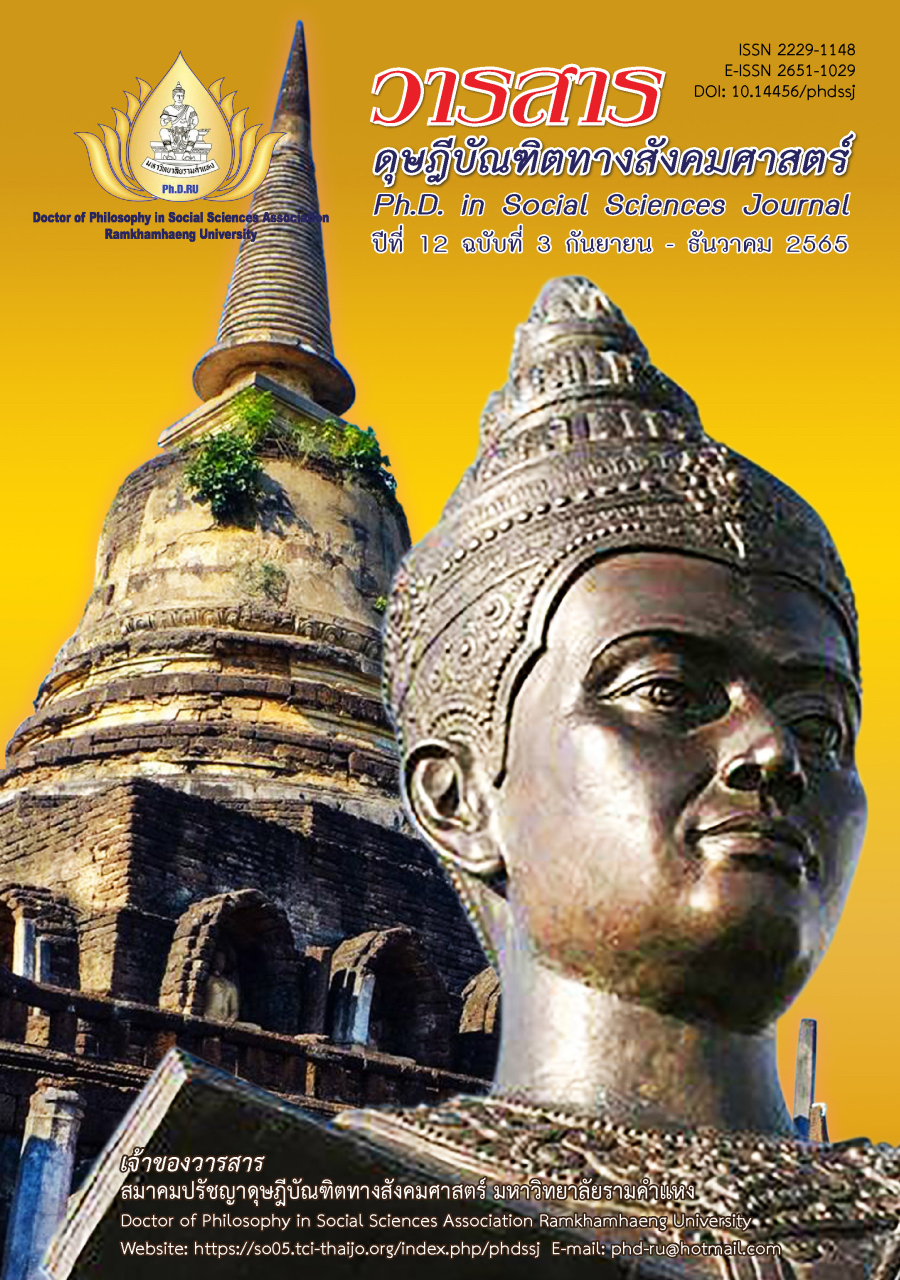Critical Reading Development Based On Buddhadhamma’s Thinking Methods
Main Article Content
Abstract
This academic article aim to analyze as follows: (1) to study and analyze the theories of reading and thinking processes (2) to study and analyze the theories of critical reading (3) to study and analyze the Teachings of Buddhadhamma on thinking processes (4) to study and analyze the Thinking Methods of Yonisomanasikarn for critical reading skill development. Literature reviews have been divided into four items: (1) the theories of reading and thinking processes (2) the theories of critical reading (3) the Teachings of Buddhadhamma on thinking processes.
The study found that (1) Reading and thinking process cannot be separated definitely, they have close relationship. The reader must think while they are reading. (2) In critical reading, the readers have to apply their memory, understanding, interpreting, evaluating, criticizing and creating to get the main idea and the objectives that the writers communicate in their writing. (3) the Teachings of Buddhadhamma on thinking processes emphasize on right method thinking solve the problems of daily livings for the better quality of lives. (4) Yonisomanasikarn is reading skill development the Buddhism method of right thinking which plays a very important role in determining a personality and good practical way of living. Yonisomanasikarn is valuable and effective method of thinking in critical reading skill development.
Article Details

This work is licensed under a Creative Commons Attribution-NonCommercial-NoDerivatives 4.0 International License.
Academic articles, research articles, and book reviews in the Ph.D. in Social Sciences Journal are author’s opinions, and not the publisher’s, and is not the responsibility of the Ph.D. in Social Sciences Journal Philosophy Association, Ramkhamhaeng University. (In the case that research is done on human, the researcher has to be trained in Ethics for Doing Research on Human Training and has to produce the evidence of the training).
References
Anderson, L. W., & Krathwohl, D. R. (2001). A taxonomy for learning, teaching, and assessing: A revision of Bloom’s taxonomy of educational objectives. Addison-Wesley.
Bacon, F. (2022). The essayes or counsels, ciuill and morall, of Francis Lo. Verulam, Viscount St. Alban. Retrieved from https://quod.lib.umich.edu/e/eebo2/B11307.0001.001/1:54?rgn=div1;view=toc
Bangkok Metropolitan Administration, Department of Education. (2017). Thai teaching, reading and writing manual of Bangkok Metropolitan Administration students. Author. [In Thai]
Bloom, B. S. (1956). Taxonomy of educational objectives: The classification of educational goals, vol. 1. Longmans.
Burmeister, L. E. (1974). Reading strategies for secondary school teachers. Addison-Wesley.
Chareonwongsak, K. (2010). Analytical thinking (3rd ed.). Success Media. [In Thai]
Gomez, L. M., & Gomez, K. (2007). Reading for learning: Literacy supports for 21st-century work. Phi Delta Kappan, 89(3), 224-228.
Kispredarborisuthi, B. (2008). Social sciences research methodology (10th ed). Chamchuree Products. [In Thai]
Krataitong, C. (2009). A development of Thai language additional course based on standards-based curriculum using backward design process to enhance analyzing and analytical reading abilities of lower secondary students. Doctoral Dissertation of Education (Curriculum and Instruction), Chulalongkorn University. [In Thai]
Lincharoen, A., Ardwichai, S., & Chan-in, P. (2009). Causal factors that make the performance score O-NET test of students in Grade 6 and Grade 6 low. National Institute of Educational Testing Service (Public Organization). [In Thai]
Mantetsawan, C. (2009). Implementation of metacognitive strategies to promote English reading comprehension and critical thinking ability of developing level students. Master’s Thesis of Education (Teaching English), Chiang Mai University. [In Thai]
Moungpluan, C. (2010). Development of self-directed model in English reading using metacognitive activities for industrial diploma students. Doctoral Thesis of Philosophy (Curriculum and Instruction), Silpakorn University. [In Thai]
Office of the Basic Education Commission, Academic Office and Educational Standards. (2009). Indicators and core learning content Thai learning subject group according to the core curriculum of basic education B. E. 2551. Author. [In Thai]
Office of the Basic Education Commission, Academic Office and Educational Standards. (2022). Guidelines for activities to promote reading to solve the problem of learning recession and to promote learning and teaching. Author. [In Thai]
Office of the Education Council. (2017). National education development plan B.E. 2560-2579. Author. [In Thai]
Office of the Education Council. (2022). The current situation of Thai education in the global 2021. Author. [In Thai]
Patrawat, K. (2014). Reading: The big door to lifelong learning. In A. Tantawevong (Ed.), Apiwat learning to a turning point in Thailand. Office for Promotion of the Learning Society and the Quality of Youth. [In Thai]
Panich, V. (2013). Teaching outside the box: Tactics to attract students. Sahamitr Printing & Publishing. [In Thai]
Patiroopwatee, P. (2004). A comparison of Thai language learning outcome in oral reading and writing basic words of first grade students taught by hunter’s teaching model and the conventional approach. Master’s Thesis of Education (Curriculum and Instruction), Silpakorn University. [In Thai]
Samanpan, T. (2006). The effect of using an instructional model emphasizing critical thinking processes and flexible learning on developing critical reading ability in English. Doctoral Dissertation of Education (Curriculum and Instruction), Khon Kaen University. [In Thai]
Sitthifong, C. (2012). Using metacognitive strategies to promote English reading and writing abilities among undergraduate students. Master’s Thesis of Education (Teaching English), Chiang Mai University. [In Thai]
Somdet Phra Phutthaghosajahn (P. A. Payutto). (2019). Buddha-dharma (extended edition) (53rd ed.). Southeast Asia University. [In Thai]
Somprayoon, W. (2010). Techniques for teaching Thai language. Dokyawichakan. [In Thai]
Timam, S. (2006). Learning process and activities for developing Thai language skills. n. p. [In Thai]


